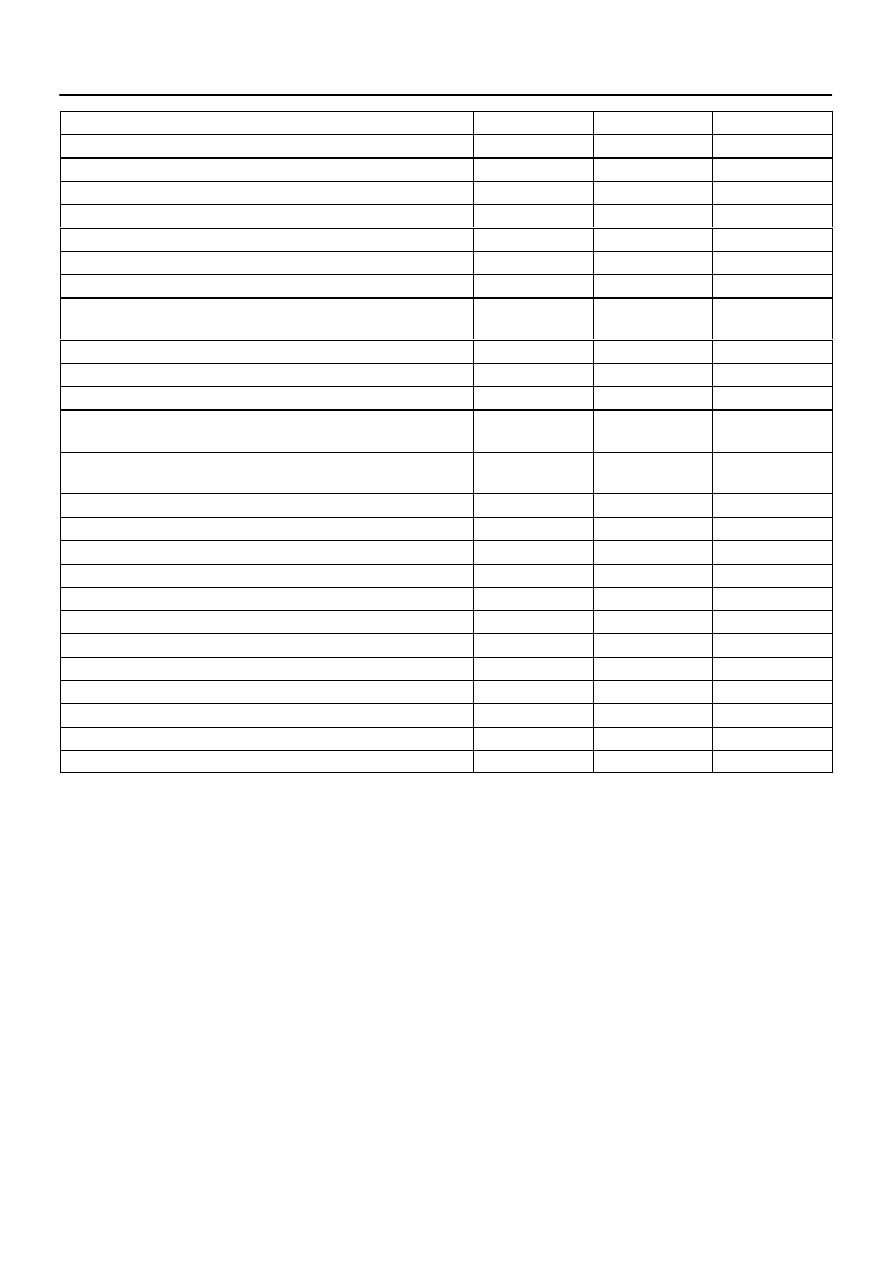Lexus GS300/400 (2000 year). Service manual - part 203

–
SERVICE SPECIFICATIONS
ENGINE MECHANICAL (2JZ–GE)
SS–9
165
Part tightened
N·m
kgf·cm
ft·lbf
Drive plate x Torque converter clutch
48
490
35
Rear support member x Engine rear mounting insulator
13.5
135
10
Front suspension crossmember x Engine mounting insulator
70
714
52
PS gear housing x Front suspension member
65
660
48
Sliding yoke x Steering intermediate shaft
35
360
26
Transmission control rod x Shift lever
13
130
9
Transmission control rod x Transmission
13
130
9
A/C compressor x Cylinder block
Stud bolt
Bolt and nut
26
52
265
530
19
38
Fuel inlet hose x Fuel pipe support
29
300
22
Front suspension member brace x Front suspension member
58
590
43
Front suspension member brace x Strut bar bracket plate
58
590
43
Connecting rod cap x Connecting rod
1st
2nd
30
Turn 90
°
300
Turn 90
°
22
Turn 90
°
Main bearing cap x Cylinder block
1st
2nd
45
Turn 90
°
450
Turn 90
°
33
Turn 90
°
Rear oil seal retainer x Cylinder block
6.0
60
53
Engine mounting bracket x Cylinder block
59
590
44
Fuel inlet pipe x Cylinder block
29
290
21
No.1 oil pipe x Cylinder block
55
550
41
Oil filter bracket x Cylinder block
90
900
66
No.2 water bypass pipe x Water pump
21
210
15
No.2 water bypass pipe x Cylinder block
21
210
15
Generator x Water pump
40
400
30
Generator x Cylinder block
40
400
30
Front exhaust pipe x Center exhaust pipe
44
440
32
Center exhaust pipe x Tailpipe
44
440
32
Heated oxygen sensor x Front exhaust pipe
45
450
33